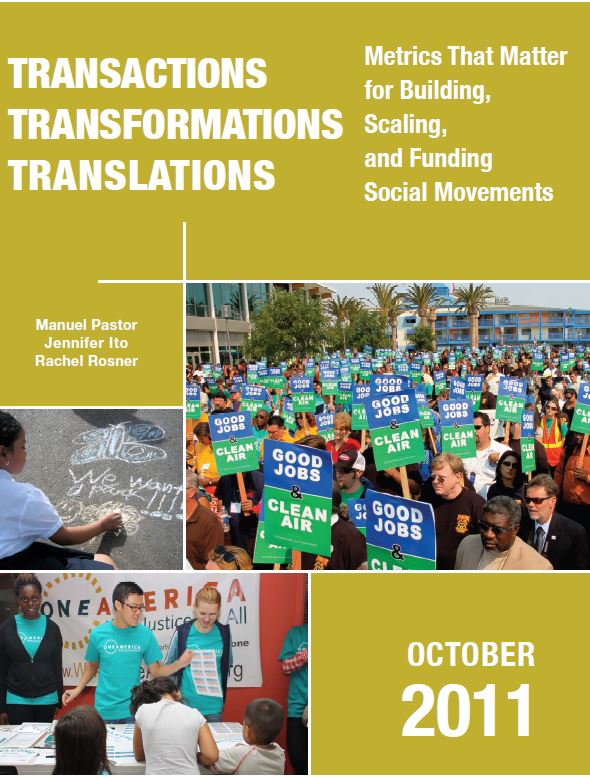
Transactions, Transformations, Translations
“Transactions, Transformations, Translations: Metrics That
Matter for Building, Scaling, and Funding Social Movements” is a way of looking at organizational growth and the alliance building that brings groups together. This evaluation approach can capture the importance of narrative and numbers, of politics and policies, of transformation as well as transaction.
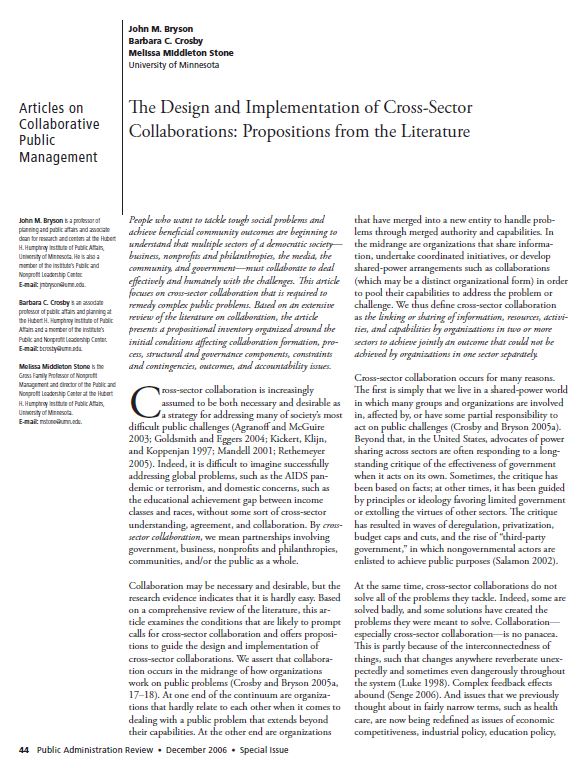
The Design and Implementation of Cross-Sector Collaboration
Based on an extensive review of the literature on collaboration, this article presents a propositional inventory organized around the initial conditions affecting collaboration formation, process, structural and governance components, constraints and contingencies, outcomes, and accountability issues.
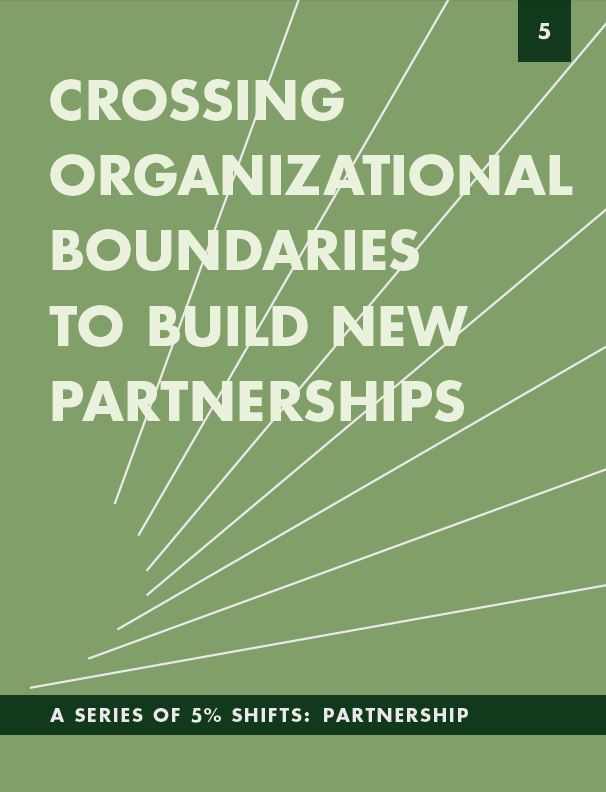
Crossing Organizational Boundaries to Build New Partnerships
Breaking down the silos between service providers, and the barriers between providers, advocates, and organizers is critical to knitting together and protecting a strong social safety net that helps build community. Furthermore, fostering collaboration between organizations (and often even within organizations) can help better identify community level issues that a strong ecosystem of organizations can address together. This report explores partnerships initiated in cities that are facing similar social and economic struggles.
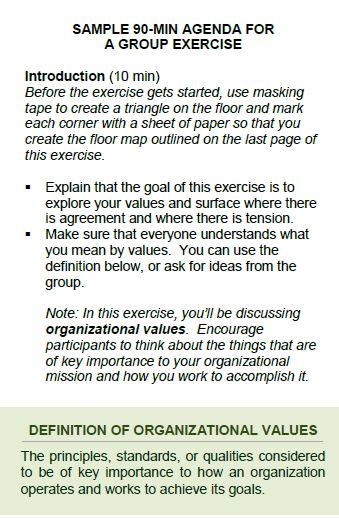
Sharing Values
This exercise is designed for working with partners to explore where values are aligned and where there might be differences. There is a discussion guide that focuses on both the alignment and possibilities where values differ.
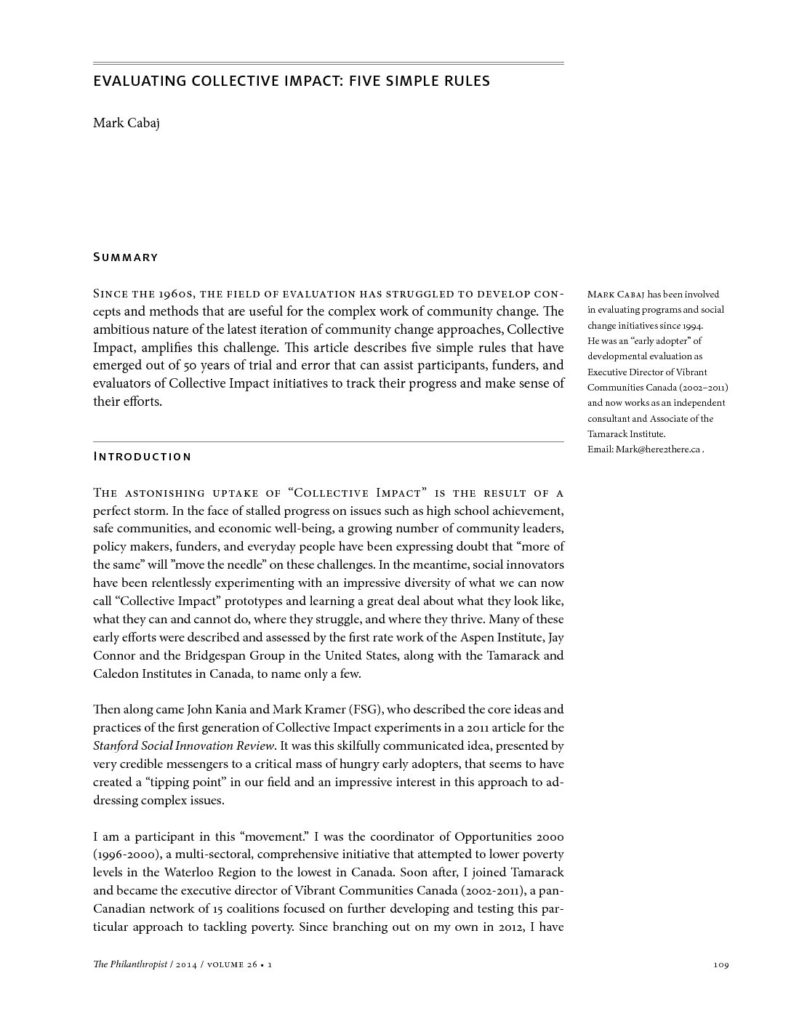
Evaluating Collective Impact: Five Simple Rules
Download this article to learn the five simple rules that that can assist participants, funders, and evaluators of collective impact initiatives to track their progress and make sense of their efforts. Downloading requires signing up to join the CIF, which is free and which we recommend.
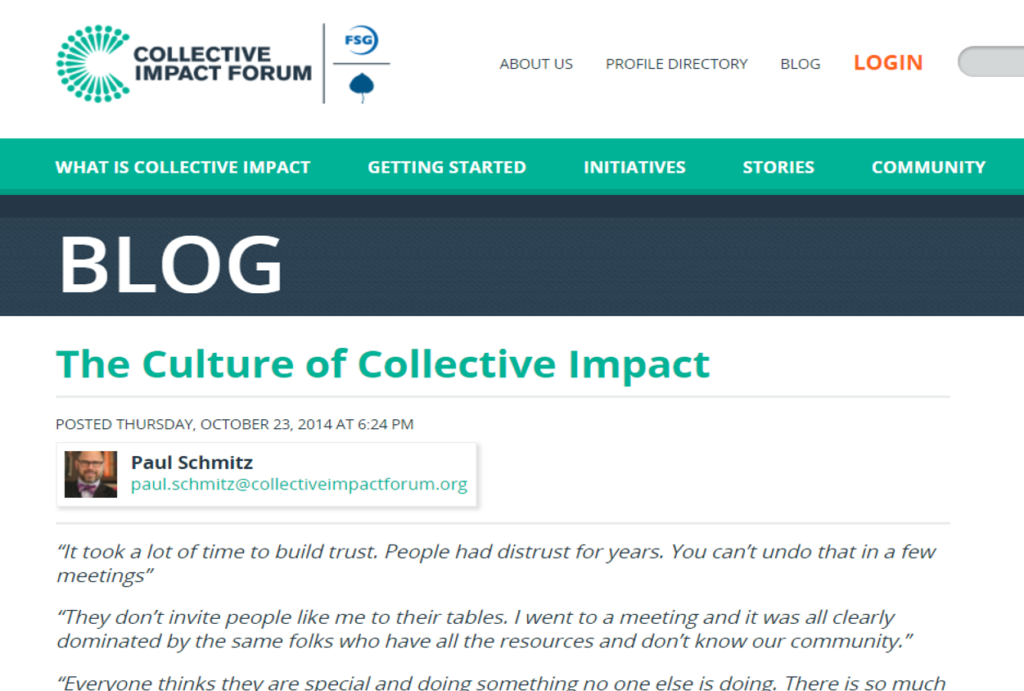
The Culture of Collective Impact
This article presents 5 core values that help leaders at all levels work better together.
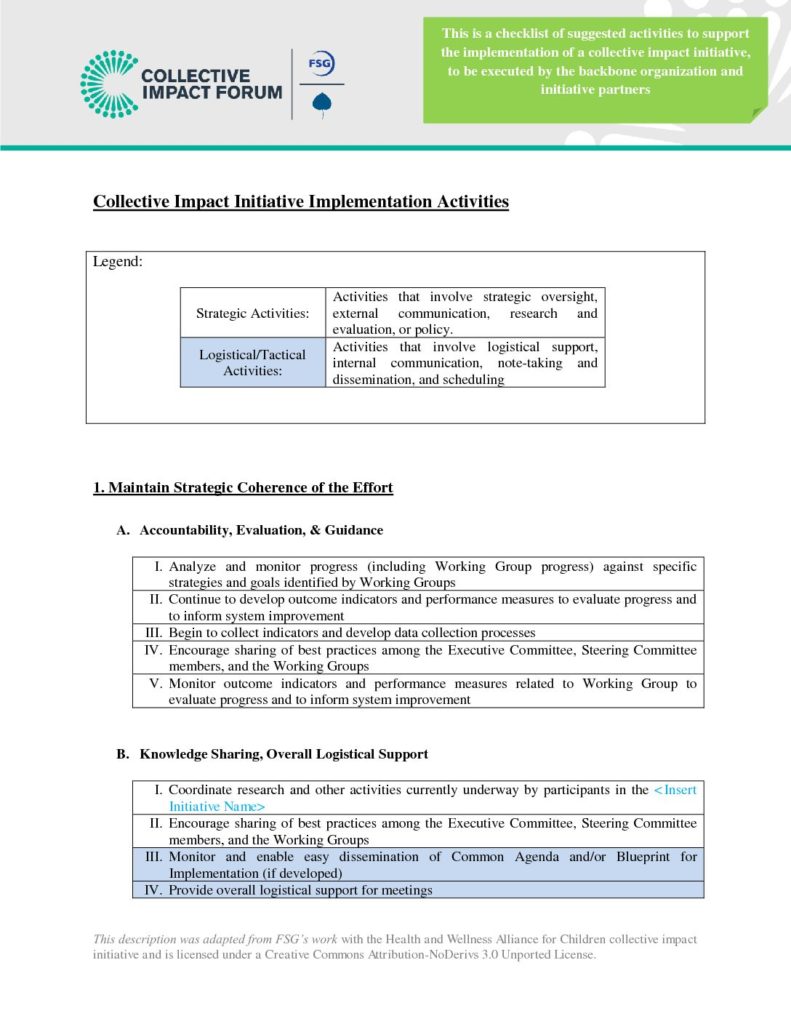
Collective Impact Implementation Activity Checklist
This checklist can be useful, regardless of the stage of development, to identify the implementation activity that can fill a gap or move the group forward. Accessing this resource requires you to join the Collective Impact Forum, which is free, and which we recommend. The Collective Impact Forum has curated published research and essential resources to help you get started in your exploration of the collective impact approach.
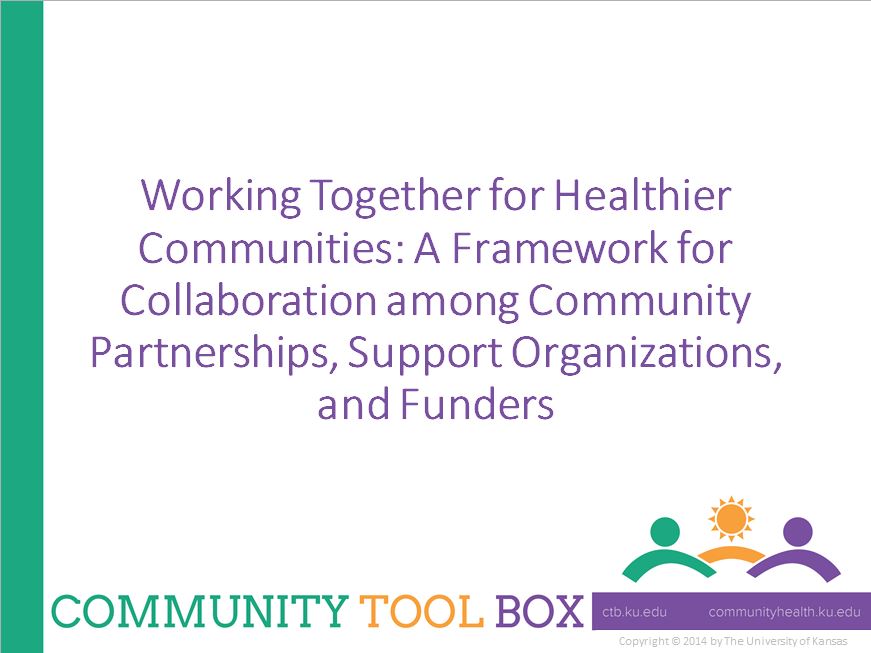
A Framework for Collaboration Among Community Partnerships, Support Organizations, and Funders
This guide focuses on understanding community change; who to involve and how to engage them. It explains seven key factors for community change and how to develop a plan. In addition, it provides a checklist for roles and responsibilities for various players at different points of the process and a power point that summarizes the main points in the section.
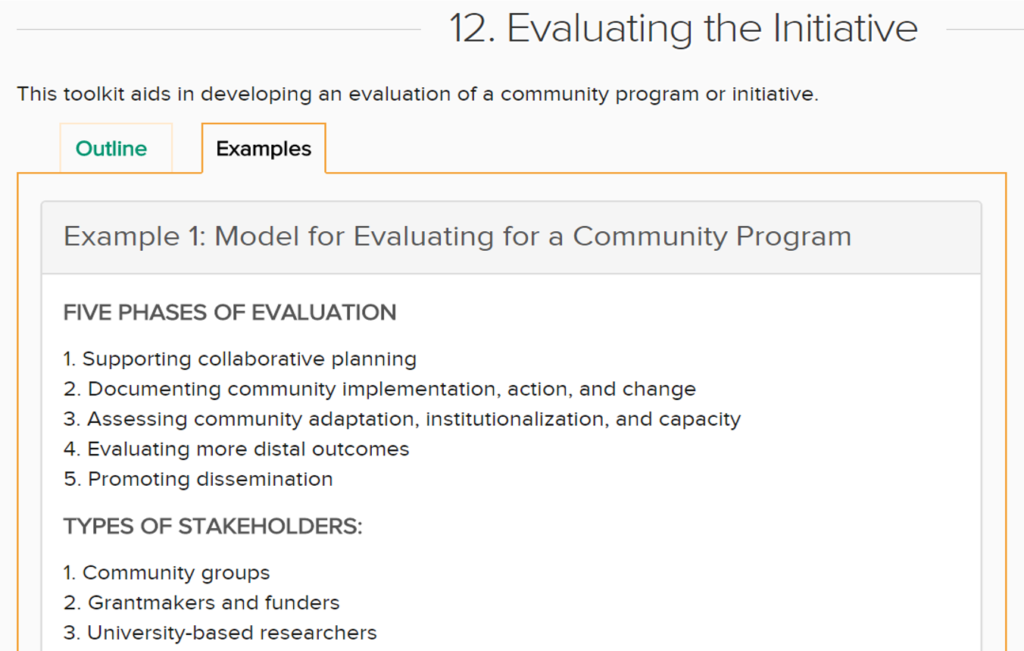
Model for Evaluating a Community Program
This example is a model for evaluating a community program or initiative. It walks through phases of evaluation, types of stakeholders, and steps to developing an evaluation plan.
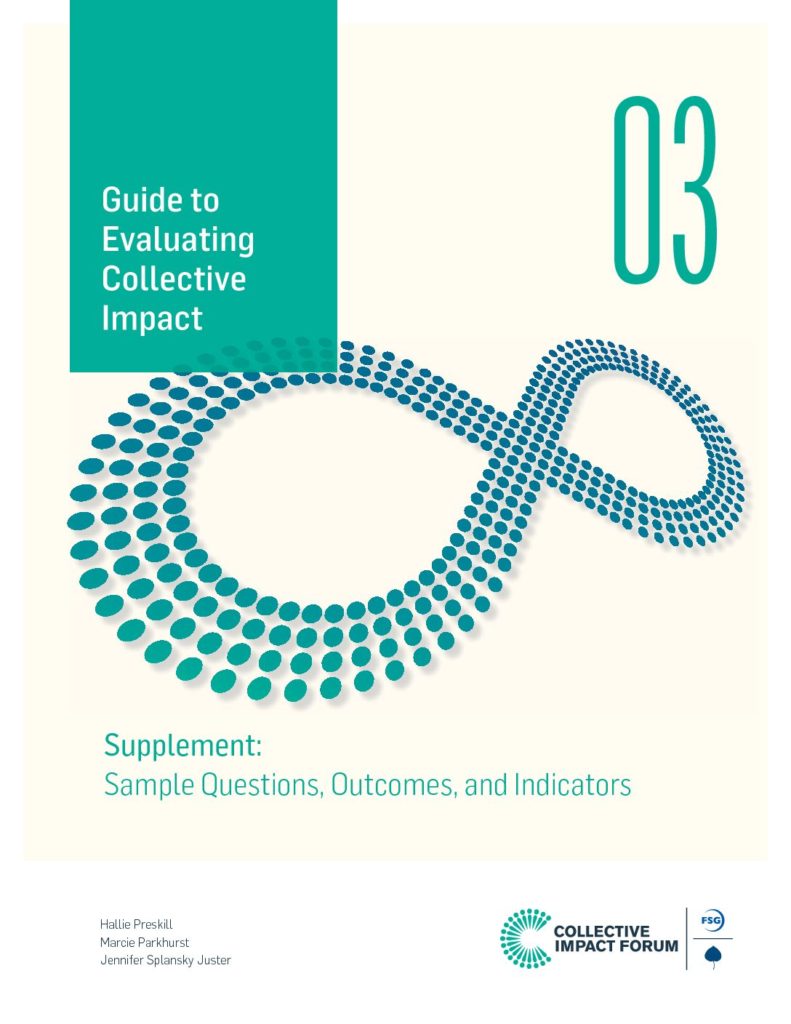
Guide to Evaluating Collective Impact
Follow this link to find the Guide to Evaluating Collective Impact report and a supplement with sample questions, outcomes, and indicators. Accessing this resource requires you to join FSG, which is free, and which we recommend.




